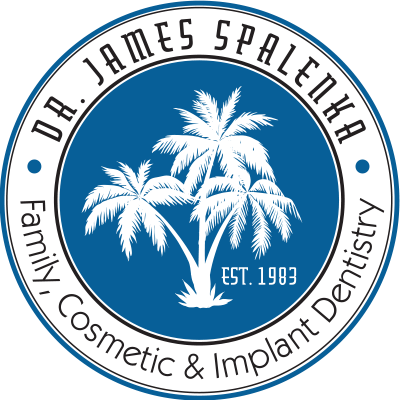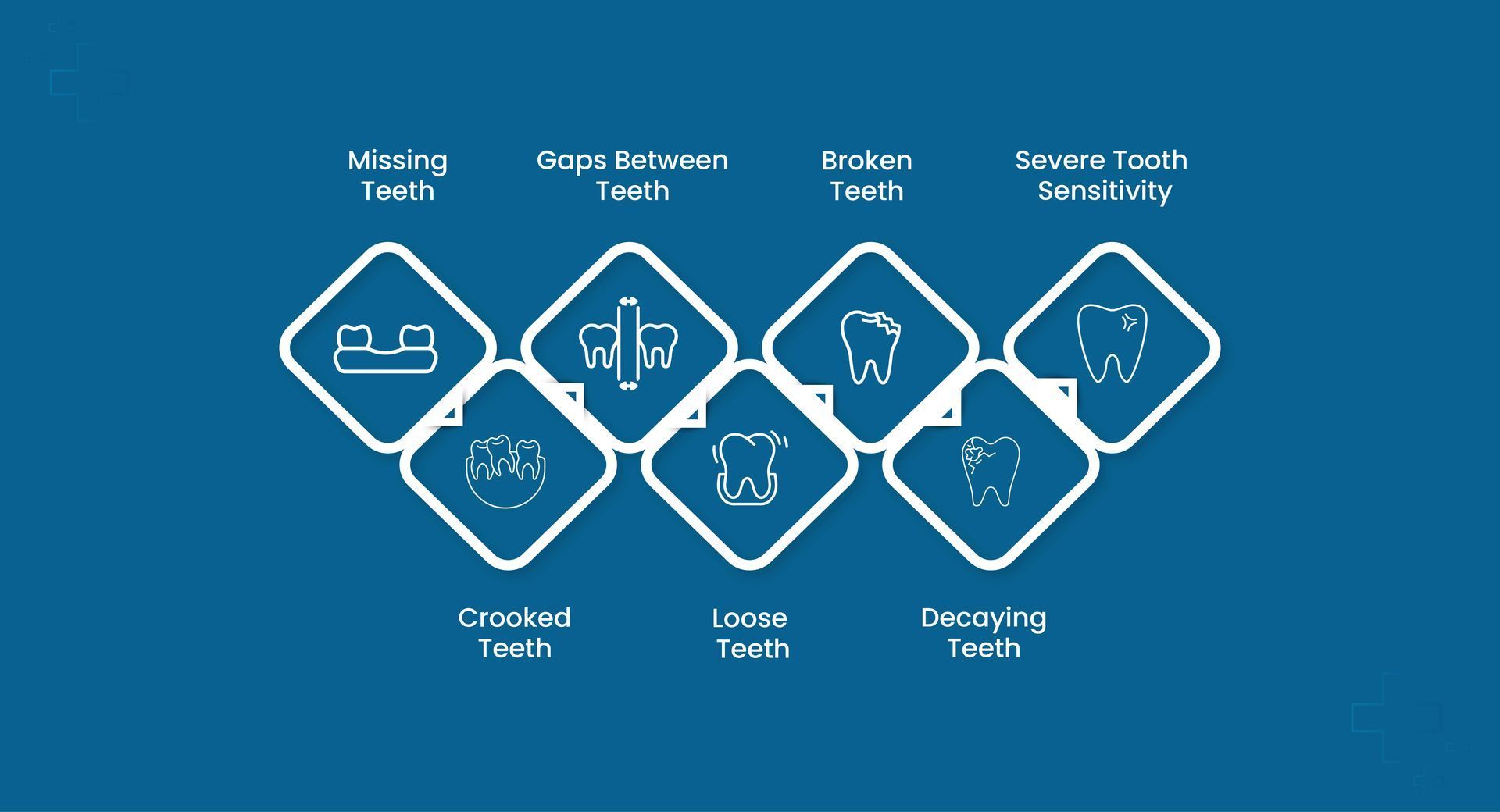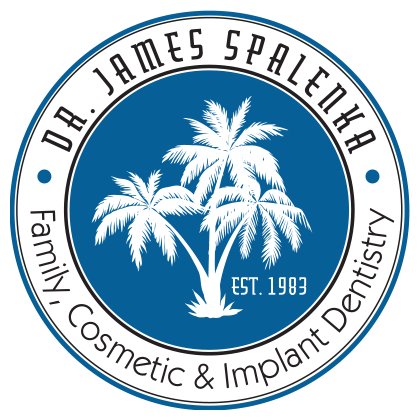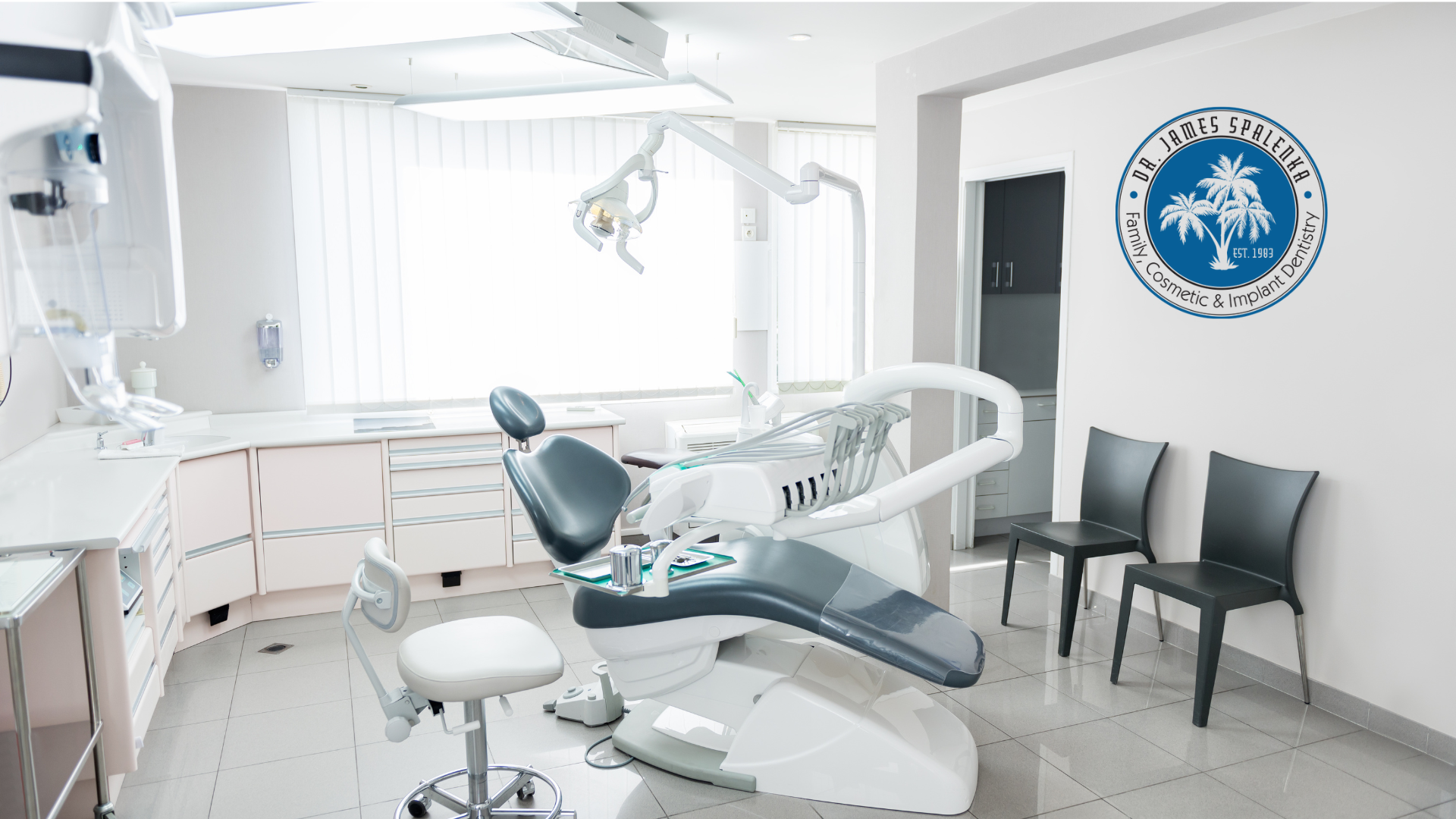
Get in touch
(858) 487-9444
ddssurfing@yahoo.com
**AVAILABLE FOR DENTAL EMERGENCIES**
DR. James Spalenka D.D.S., F.A.G.D.
Masters Degree in Implantology, Owner and Dentist
Seven Signs You Need A Restorative Dentist In San Diego
February 17, 2023
Restorative dentistry plays a crucial role in repairing and restoring damaged teeth to healthy function. No matter the disease at play, advanced procedures and technology available today can be curative when caught early enough, and able to protect your health. Dentists use various treatments, such as fillings, crowns, bridges, implants, and orthodontics, to halt disease and repair the mouth's natural aesthetics.
1. Missing Teeth: Trauma to the face or mouth can cause a tooth to be completely displaced from its socket, leading to missing teeth. A restorative dentist can replace a missing tooth and restore normal oral function, depending on the extent of damage and the individual situation, you may opt for a bridge and crown, dentures, or implants.
2. Crooked Teeth: Can negatively affect an individual's self-image and make it difficult to eat properly or speak clearly. Crooked teeth are more difficult to clean and more prone to decay. An orthodontist will treat complicated misalignments and jaw problems, while your dentist can help by with clear aligners to correct the alignment of the teeth.
3. Gaps Between Teeth: Also known as diastema, can affect the appearance of an individual's smile and lead to poor self-esteem. A restorative dentist can help fix this issue with specialized treatments that reduce or eliminate the gap between teeth. Some common treatments used are braces, composite bonding, and veneers.
4. Loose Teeth: Periodontal disease, gum recession, or trauma due to injury or an abscessed tooth can cause a loose tooth. Dental surgeons provide treatments such as bone grafting or dental implants that secure the tooth back into its socket, restoring stability and comfort while improving aesthetics.
5. Broken, Cracked, Chipped Teeth: Tooth damage can be caused by trauma from external forces, such as falls, sports-related injuries, car accidents, and other impacts. Restorative dentists will fix the issue by removing damaged portions of enamel and filling the space with materials such as composite resin.
6. Decaying Teeth: The most common treatment for decaying teeth is the placement of a filling, which will repair the damaged area and protect it from further damage caused by bacteria or acids in food and drinks. Some patients may choose crowns if more extensive damage has occurred.
7. Severe Tooth Sensitivity: Restorative dentists use techniques to treat severe tooth sensitivity, such as restoring damaged enamel with bonding materials or crowns to protect the affected teeth from further harm. They may opt for root canal therapy if decay has spread deep into the tooth's center and other treatments are not effective.
1. Missing Teeth: Trauma to the face or mouth can cause a tooth to be completely displaced from its socket, leading to missing teeth. A restorative dentist can replace a missing tooth and restore normal oral function, depending on the extent of damage and the individual situation, you may opt for a bridge and crown, dentures, or implants.
2. Crooked Teeth: Can negatively affect an individual's self-image and make it difficult to eat properly or speak clearly. Crooked teeth are more difficult to clean and more prone to decay. An orthodontist will treat complicated misalignments and jaw problems, while your dentist can help by with clear aligners to correct the alignment of the teeth.
3. Gaps Between Teeth: Also known as diastema, can affect the appearance of an individual's smile and lead to poor self-esteem. A restorative dentist can help fix this issue with specialized treatments that reduce or eliminate the gap between teeth. Some common treatments used are braces, composite bonding, and veneers.
4. Loose Teeth: Periodontal disease, gum recession, or trauma due to injury or an abscessed tooth can cause a loose tooth. Dental surgeons provide treatments such as bone grafting or dental implants that secure the tooth back into its socket, restoring stability and comfort while improving aesthetics.
5. Broken, Cracked, Chipped Teeth: Tooth damage can be caused by trauma from external forces, such as falls, sports-related injuries, car accidents, and other impacts. Restorative dentists will fix the issue by removing damaged portions of enamel and filling the space with materials such as composite resin.
6. Decaying Teeth: The most common treatment for decaying teeth is the placement of a filling, which will repair the damaged area and protect it from further damage caused by bacteria or acids in food and drinks. Some patients may choose crowns if more extensive damage has occurred.
7. Severe Tooth Sensitivity: Restorative dentists use techniques to treat severe tooth sensitivity, such as restoring damaged enamel with bonding materials or crowns to protect the affected teeth from further harm. They may opt for root canal therapy if decay has spread deep into the tooth's center and other treatments are not effective.

Frequently Asked Questions About Restorative Dentistry
What special care will I need for restored teeth?
After restorative dental procedures, it is essential to care for your teeth properly to prolong the treatment's longevity. Good oral hygiene habits such as brushing twice daily, flossing regularly, and visiting your dentist for regular check-ups and cleanings can help keep your restored teeth in good condition
How Long Do Restored Teeth Last?
The longevity of restored teeth depends on the type of restoration, how well you care for your teeth, and the extent of the damage. The lifespan of crowns and bridges varies from 5-15 years, depending on the material used and the location in the mouth. Generally, fillings last 5-12 years, while dental implants can last more than 25 years.
What is the difference between restorative and cosmetic dentistry?
Restorative dentistry focuses on repairing damage to the teeth and restoring their functionality. Cosmetic dentistry focuses on improving the appearance of teeth, but very often cosmetic procedures also improve the structure and strength of teeth.
Can I replace my old silver fillings with tooth-colored fillings?
Yes. Also, inlays onlays and crowns are very effective restorative solutions.
What is complete mouth restoration, and who needs it? Full mouth restoration, also known as Complete mouth reconstruction, is a comprehensive dental treatment that addresses multiple dental issues and aims to restore the function and aesthetics of the entire mouth. People with numerous missing, damaged, or decayed teeth and those with advanced periodontal disease may benefit from complete mouth restoration.
What are some of the treatments that may be included in a complete mouth restoration?
The treatments included in a complete mouth restoration may vary depending on the patient's specific needs. Still, they may consist of procedures such as dental implants, crowns, bridges, veneers, inlays/onlays, gum contouring, root canal therapy, and orthodontics, among others.
How long does a full mouth restoration take to complete?
The duration of a complete mouth restoration depends on the extent of the work required and the specific treatments included. Typically, it may take several months to complete, with some patients needing a year or more to achieve their desired results.
Will a complete mouth restoration be painful?
The procedures involved in a complete mouth restoration may cause discomfort. Your dentist will take steps to minimize pain and make you as comfortable as possible. Local anesthesia numbs the affected area, and sedation dentistry options may be available to help you relax during the procedure.
How can I maintain my new smile after a complete mouth restoration?
Maintain your smile after a complete mouth restoration by following good oral hygiene practices, such as brushing and flossing regularly, and visiting your dentist for routine cleanings and check-ups. You may also need to wear a night guard if you grind your teeth or avoid hard or sticky foods that could damage your restorations. Your dentist can provide personalized recommendations for maintaining your new smile after complete mouth restoration.
Take Away
Overall, signs that indicate when it’s time to seek help from a restorative dentist will include pain, bad breath, infection, discolored or missing teeth. These issues can significantly impact an individual's oral health, confidence and overall health. We know that poor oral health increases the risk of diabetes, heart disease, stroke and auto-immune diseases.
With various treatments, including fillings, crowns, bridges, implants, braces, and clear aligners, a dentist can restore your teeth to their original function and appearance while minimizing discomfort as quickly as possible.
It is crucial to remember that seeking help from a dentist as soon as possible is the best course of action. Regular dental check-ups are essential for identifying issues in their early stages, making them easier to treat, and preventing them from progressing. You can receive the appropriate treatment and maintain optimal oral health for years by attending regularly scheduled dental examinations and cleaning every six months, or as recommended.
Restorative dentistry is essential to dental health, providing solutions for various dental issues. If you are experiencing any of the signs mentioned in this article, do not hesitate to seek the help of a dentist. With the proper treatment, you can restore your smile and confidence and improve your overall oral health.
SERVICES
Contact Details
James Spalenka, D.D.S., F.A.G.D.
16766 Bernardo Center Dr., Ste. 105 San Diego, CA 92128 USA
CALL US: (858) 487-9444
Business Hours
Monday - Friday
9:00 am - 5:00 pm
Saturday
By Confirmed Appointment
Sunday: Closed
© Copyright 2024 | All Rights Reserved | James Spalenka, D.D.S., F.A.G.D.


